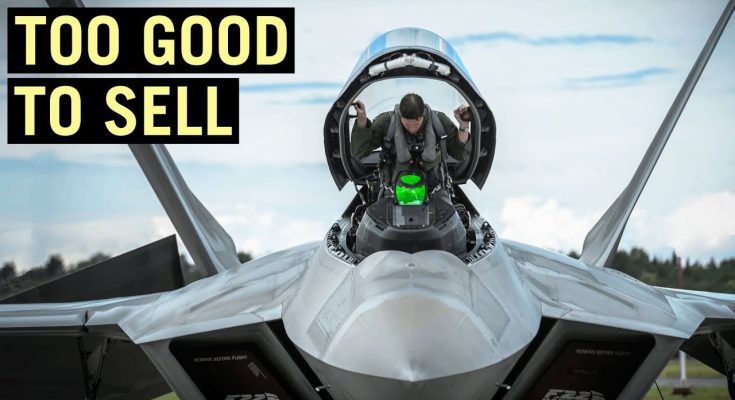The Stealth Fighter That America Never Exported
In the annals of military aviation, few aircraft are as shrouded in mystery and intrigue as the McDonnell Douglas F-117 Nighthawk. Often described as the “Stealth Fighter” that changed the game for modern aerial warfare, the F-117 remains an iconic example of the US Air Force’s commitment to technological superiority. But what sets the F-117 apart even further is not just its revolutionary design or its role in combat, but the fact that it was the only operational stealth fighter the United States ever produced and notably, the US never exported it to any foreign nation.
The Birth of Stealth Technology
The idea of stealth in military aviation began in the 1970s, driven by a need to overcome the increasing sophistication of radar detection systems. The US military sought an aircraft that could evade enemy radar systems while maintaining its ability to strike high-value targets. This led to the creation of the Have Blue program, which served as a prototype for what would eventually become the F-117.
By the early 1980s, McDonnell Douglas was selected to build a stealth fighter based on lessons learned from Have Blue. The F-117 Nighthawk emerged as the first aircraft to feature radar-absorbent materials, an angular design, and other technologies that allowed it to avoid detection by most radar systems. While not a “true” fighter in terms of speed and agility—its design emphasized stealth over maneuverability—the F-117 became a symbol of American air superiority in the 1980s and 1990s.
Why America Never Exported the F-117
Despite the F-117’s success and its status as a cutting-edge aircraft in its time, the US government chose to keep the Nighthawk strictly within its own borders. There were several key reasons for this decision.
- National Security Concerns: The most prominent reason for not exporting the F-117 was its advanced stealth technology. The ability to avoid radar detection is one of the most sensitive aspects of modern warfare, and sharing that capability with foreign nations could potentially weaken the strategic advantage the US held over its adversaries. The F-117’s radar-evading capabilities were considered a national security asset, and its potential to fall into the wrong hands was simply too great a risk.
- Geopolitical Strategy: The United States has long maintained a policy of controlling the flow of advanced military technology to other nations, particularly those that might use it in ways that run counter to US interests. During the Cold War and beyond, countries such as Russia, China, and even some US allies were considered potential threats to the balance of power. Sharing such an advanced stealth fighter could have shifted the balance in unforeseen ways.
- Exclusivity and Deterrence: The F-117 was one of a kind during its operational period. Keeping it exclusive gave the US a significant edge in terms of deterrence. By maintaining a monopoly on stealth technology, the US ensured its military forces had a technological superiority that few others could challenge. The fear was that exporting the F-117 would weaken the psychological deterrence it provided.
The Legacy of the F-117
The F-117 served with distinction in several conflicts, including the Gulf War, Kosovo War, and Iraq War, where it carried out high-precision bombing missions with unparalleled effectiveness. Despite being officially retired in 2008, the F-117 left an indelible mark on military aviation, paving the way for the development of more advanced stealth aircraft, such as the F-22 Raptor and F-35 Lightning II.
Interestingly, after its retirement, the F-117 was never fully “declassified” or made available to foreign buyers. The US military chose to retire the Nighthawk not because its capabilities were outdated, but rather because of its role in the evolution of stealth technology and the broader shift towards more versatile and capable aircraft.
Conclusion
The F-117 Nighthawk stands as one of the most iconic and influential aircraft in history. Its role in the development of stealth technology cannot be overstated. The decision to never export the F-117 was driven by a combination of national security concerns, geopolitical strategy, and the desire to maintain technological superiority. Today, the F-117 is a relic of the past, but its legacy lives on in the continuing pursuit of stealth and advanced aviation technology by the United States. It remains a symbol of how military innovation can redefine the balance of power on the world stage.



